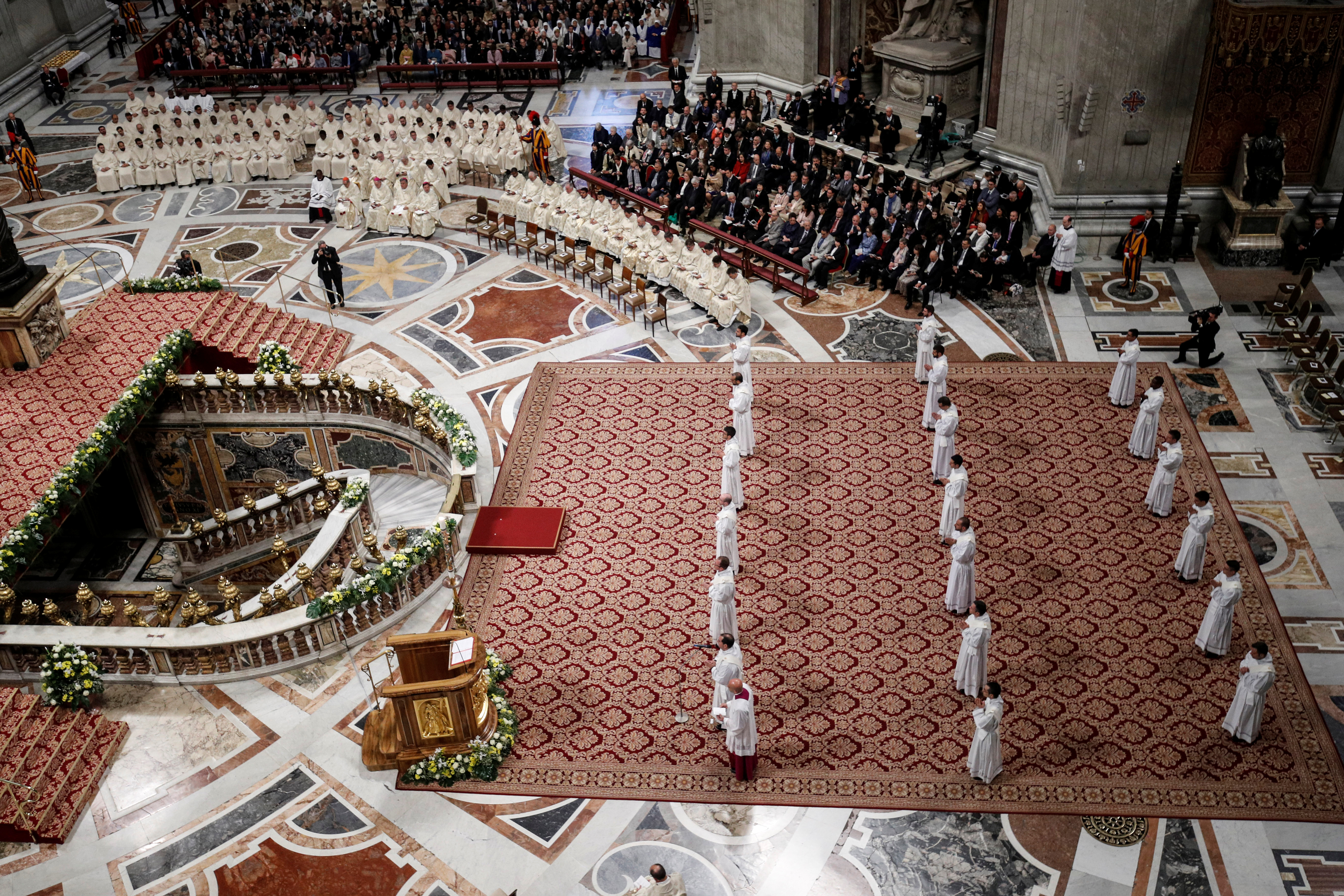
Newly ordained priests stand as Pope Francis celebrates an ordination Mass in St. Peter's Basilica at the Vatican May 12, 2019. The pope ordained 19 new priests. (CNS/Giuseppe Lami, Pool via Reuters)
Pope Francis has backed away from the proposal to allow for married clergy in a part of the world where there is a shortage of priests. The move might have been a step toward a significant change in the Catholic Church. It is the kind of small change that could open the door to larger changes typical of church reforms in the past.
These times, however, require a more imaginative and bolder change. Forty years ago, Andrew Greeley proposed a solution to the priest shortage that he called a "Priest Corps." He thought of this move as a temporary experiment which is still the way it could be begun. But it could lead to a permanent change in the leadership of the Catholic Church.
His proposal was to ordain priests for 10 years. The celibacy question becomes immediately irrelevant (gender, too, one can hope). Some people who are very good at the role would be reappointed. There might be individuals who would continue for a lifetime in the position, but no one would be appointed as permanent. Those with extensive experience could be appointed as overseers or bishops for a specified period of time.
Pope Francis in 2015 made this remarkable statement: "A time limit should be established for roles in the church, which are in reality a form of service. … It would be opportune for all roles of service in the church to have a time limit – there are no lifelong leaders in the church." Pope Benedict XVI led the way in showing that the papacy should be included in this principle. Ten years is plenty of time for anyone to occupy the papacy.
There has been a proposal in recent years to do away with priesthood. Most of the people who strongly oppose the proposal have been priests, understandably so. They are right in arguing that such a change is impractical and undesirable. While there was no one called priest in the earliest church, a prayer leader is a valuable role in a community.
The development in the early church that was an unfortunate historical accident was the split between the readers and the nonreaders. In part because of the church's success in attracting converts, a two-class structure emerged with the clergy on top. The bottom class was simply called the people or the laity. Clergy and priesthood unfortunately were coextensive.
Many people, including the current pope and some bishops, have said that the church has a problem of clericalism. The only sure way to get rid of clericalism is to eliminate the clergy, which would also mean eliminating the laity. A laity exists only because there is a clergy. Although "laity" started out meaning "people," its only meaning for many centuries, and the meaning that the church bequeathed to the secular world, is that the "layperson" is someone lacking knowledge or skill. The church is the only institution that keeps trying to give "laity" a positive meaning.
Advertisement
Many priests in recent years have acknowledged that clericalism is a problem, and they have urged their fellow priests to get rid of the attitude and practices that make up clericalism. I sympathize with these good men and do not wish to ridicule their efforts.
But clericalism is inherent to the present system of men who promise never to have a sexual life, are sent for education to a segregated place called a seminary, are ordained to be the sole leader of an organization composed of "laity," are paid by contributions from the people served, who dress in ornate clothes and are addressed with a paternal title, and live in a provided residence next to their work. Any contemporary priest who might be described as non-clerical would have had to resist almost every element of this system.
"Priesthood" is one of the functions of a community. Prophesy is another. There is no reason to expect that someone good at priesthood would necessarily be good at preaching. Why not tap the talent in the community for a variety of works. After someone serves for a time in a church office, he or she would simply cease to be an official without "reduction to the lay state."
This change, as Greeley proposed, could be initiated immediately with a few outstanding Catholics who could step into the role of priest. It would take many decades for the big picture to change dramatically. Experiments would be needed in creating a new configuration of church offices. But the Catholic Church needs immediate change of language and the first clear steps to reform.
[Gabriel Moran is professor emeritus of educational philosophy at New York University.]



